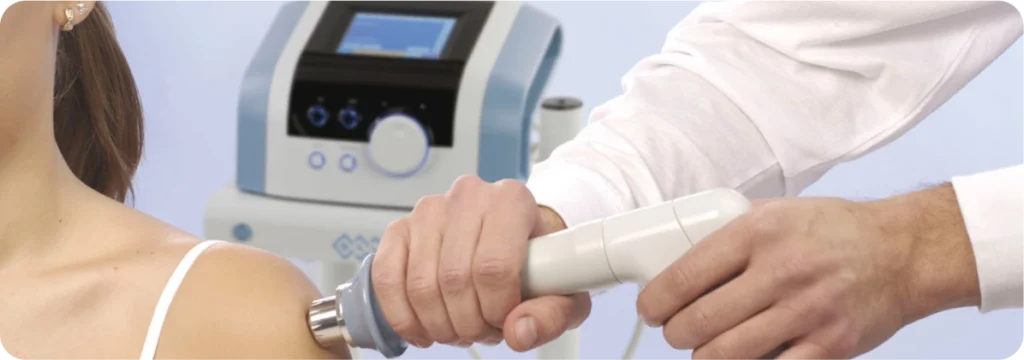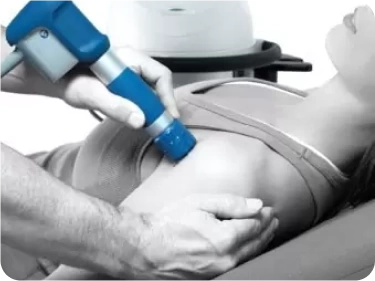Shockwave
A therapy to heal and relieve pain
Also known as shockwave therapy, RPW (Radial Pressure Wave) therapy is a cutting-edge, non-invasive technology that promotes the rapid treatment of injured tissues, bones, heels, and joints. The shockwave is an intense acoustic wave that travels faster than the speed of sound.

An innovative and effective treatment
With virtually no side effects, this treatment method reduces pain and increases blood circulation, which stimulates the treatment process. By accelerating recovery, RPW shockwave therapy helps patients regain the joy and comfort of natural mobility.
Benefits
- Non-surgical, non-invasive, and painless treatment
- Affordable solution
- Accelerated treatment process
- Minimal side effects

Treatable conditions.
- Plantar fasciitis, heel pain, or heel spur
- Lateral epicondylitis (tennis elbow)
- Jumpers knee
- Achilles tendinitis
- Shin splints.
- Frozen shoulder
- Sprain, muscle cramp, and muscle spasm
- Scar tissue
- Cellulite
Frequently Asked Questions
Shockwave therapy uses high-energy acoustic waves that penetrate damaged tissues to stimulate the body’s natural treatment processes. While you may experience slight discomfort during the treatment, it is generally well-tolerated and adjusted according to your sensitivity. Most patients describe a quick tapping sensation that decreases with each session.
The typical number of sessions ranges between 3 and 6, spaced about 5 to 10 days apart depending on your condition and its severity. Each session lasts around 20 minutes, and many patients report significant improvement after 2-3 treatments. The treatment plan is personalized based on your specific condition and response to the treatment.
Shockwave therapy is generally covered by many private insurances as part of physiotherapy treatments. We recommend checking your specific coverage with your insurer. For work-related or road accident cases, CNESST and SAAQ may cover this treatment when medically recommended.
The majority of patients notice a significant reduction in pain and an improvement in mobility after 2-3 sessions. Results continue to improve in the weeks following the treatment as the healing process continues. Clinical studies show an 80% success rate for chronic conditions such as plantar fasciitis or epicondylitis.